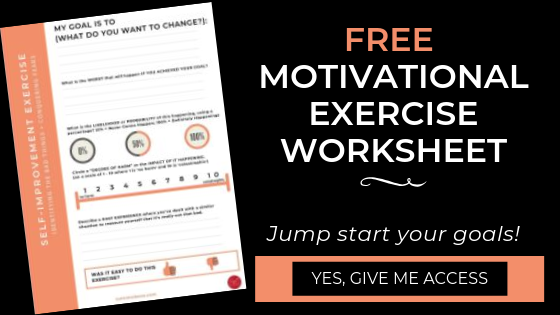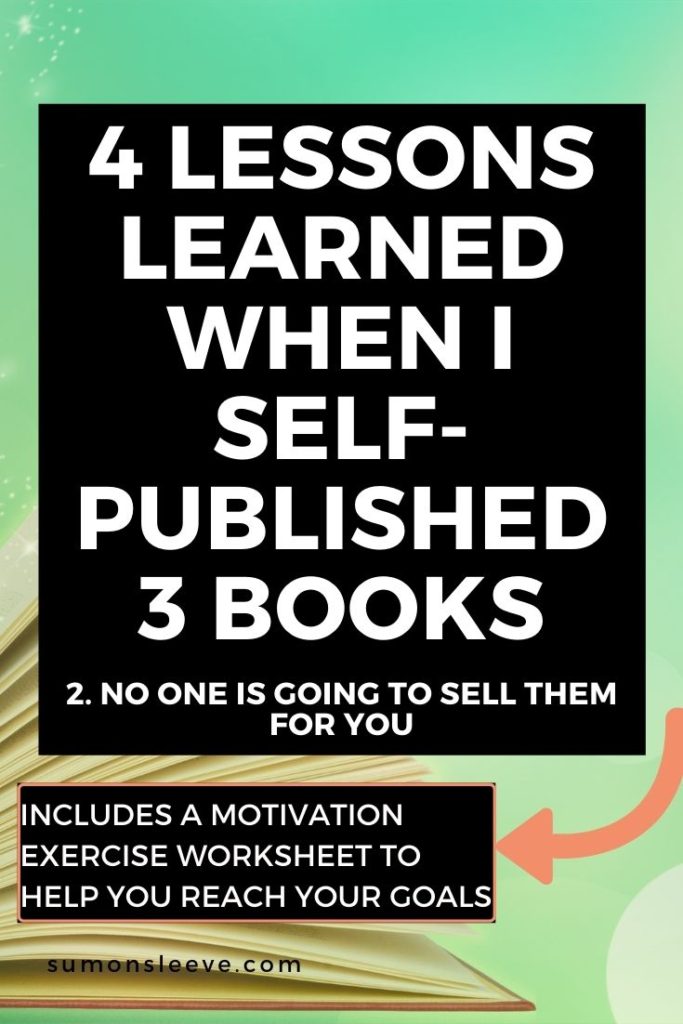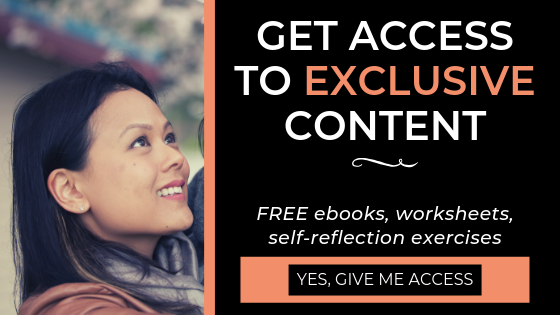Can you make money with self-published books? I have 3 and here are my lessons learned.

I started blogging in 2017. At the time, I had no idea what I was doing. I signed up for a Blogger account and basically dumped my thoughts onto digital paper each week, hit publish and shared it with my real friends on Facebook.
Then, I started reading blogs to find out how to convert my blog into a business. It’s funny because I find that those who blog about how to make money from blogging are the only ones who actually make money from blogging (and from teaching others how to make money from blogging).
Is this one of those chicken or egg scenarios?
Anyway, I remember reading a post about selling self-published books. I think it had some catchy title like “I made $30k selling my first self-published book.” The blogger went on about how she used her best-performing blog posts to serve as the basis of her book, how easy it was and how everyone can do it too. Of course, she ended the post with,
“Sign-up for a free guide on how to self-publish your book today!”
So following her advice, I reviewed my site’s Google Analytics data to see which articles were getting the most traction, put my head down and did it. It’s been over a year since I self-published 3 books, one about brutally honest dating advice, another about how to deal with Asian parents and lastly, one about how to have a healthy marriage.
Here are 4 lessons that I learned:
And no, I didn’t make $30k in case you were wondering.
1. It was a lot easier than I thought
I decided to go with Kindle Direct Publishing (KDP) to self-publish my books. It doesn’t cost anything, reaches millions of readers on Amazon, and prints on-demand. I didn’t want to hold inventory at my house. Plus, I had limited time since I just gave birth to my son and that newborn sleeping phase where I can work in silence only lasts a couple of months.
Then I followed their step-by-step guide; it’s relatively easy even for a sleep-deprived mom of 2. I wrote my manuscript in Word, created the table of contents, formatted it in Kindle Create and uploaded the final version onto KDP. Then I created a cover and hit publish. After the first book, the second and third ones were much easier to do.
The act of self-publishing is quite painless if you have a manuscript. For me, because my books are based on my existing blog posts, the content was already there; I needed to curate them into chapters, add sections for continuity and cohesion, edit unnecessary bits, proofread about a dozen times, create titles and subtitles so it was more organized and polished before publishing.
That was the easy part. Now, came the hard part.
2. No one is gonna sell them for me
Of my three books, guess which one sold the most copies?
The one that I promoted the most (How To Deal With Asian Parents).
Here’s the hard truth, when you hit publish, unless you’re super famous with tons of followers and/or a team of publicists, no one is gonna sell your book for you. It’s up to you.
I decided to focus on the Asian Parents book because it was unique compared to the others. It’s a topic that is close to my heart and I know many folks struggle with it.
Reaching out to my network
From friends, family, email subscribers, dedicated social media followers etc., I reached out to everyone I knew to see if they’d like to get a copy or if someone they know would like one. If they were hesitant, I’d ask if they could share it to their network (whichever channels they had the most following, Facebook, Instagram, LinkedIn, Twitter etc) if possible.
I even asked folks who didn’t have Asian parents because they could still relate or know someone who could. For instance, I had a few non-Asians with Asian spouses take a gander at my book.
Mary Ng, Canadian Minister of Small Business, Export Promotion and International Trade, bought my book and promoted it via her Twitter and Instagram accounts, giving me a rave review.
And those who graciously bought books, I followed up with them to ask if they could leave a review for me on Amazon or Goodreads. Reviews draw traffic; it’s social proof that your book is worth paying for since someone has given their stamp of approval. I saw an uptick in sales whenever someone left a review.
I am eternally grateful to everyone who supported me in their own ways.
Interviews (written and audio)
I sought opportunities to appear as a guest on multiple Asian-themed podcasts and Facebook group live sessions to promote my book.
I connected with Ricepaper magazine to interview me and they did a very authentic write-up.
And of course, when these came out, I shared them through all my channels and repurposed what I could.
Videos (YouTube and Television)
I wrote blog posts and made YouTube videos where I answered the most common questions I’ve received about my book and how my parents reacted when they found out how much (or how little) I make writing.
I recorded a Ted-like talk for Crushing The Myth about how to deal with our parents during COVID while promoting the book.
Lastly, I appeared on the local Chinese news channel to discuss the violent racist incidents that were happening in my city and how we need to support our ageing parents which was the segue to my book
And after all of that, guess how many copies I sold?
Not enough to pay the bills, less than 100 copies.
What I could have done differently
I didn’t do a book tour (even a virtual one) because I had to watch my son and only worked on this when I had the time. All the book reviewers I contacted either refused to do non-fiction or said it wasn’t relevant to them; most of them never got back to me. I could have kept trying.
I could have created more hype, amping it up, holding giveaways or contests, promoting it before it came out, possibly getting some pre-orders in before publishing.
There are plenty of things I could and can do to promote my book but it was actually leading me down the wrong path.
3. It put me on the life coach path
As I continued promoting and networking with folks who might be interested in my books, I started meeting a ton of life coaches.
And life coaches have life coaches. So they either wanted clients and/or ask me how my coaching business was doing. I wasn’t interested in getting coached and I don’t have a coaching business.
However, when I think about the topics that I covered in my books, it totally makes sense why someone would think I’m a life coach.
I have the utmost respect for coaches; I’ve heard so many stories of how they have helped people go from wallowing at rock bottom to reaching their wildest dreams. I’ve personally attended a Tony Robbins’ Power Of Success event and that was a life-changing experience. When I saw him speak, I could feel my body shake. Plus, I know it can be quite lucrative.
I was certified in coaching a decade ago as I do a lot of it at my 9–5, from facilitating difficult conversations between different stakeholders and internal staff to coaching middle management on how to communicate organizational changes to their teams.
However, writing is the side hustle that I want to turn into a career; I was trying to escape what I was doing at my 9–5, not extend my sentence. Then when folks started reaching out to me to coach them through their personal issues (dating, relationships, Asian parents), it didn’t feel right. But I wrote the books; obviously, I have answers right?
Or they would ask if I had a group they could join where I would host, facilitate discussions, and share stories of similar struggles, building a community of healing. I wanted to help but that wasn’t what I wanted to pursue.
I knew if I really wanted to make money from my books, becoming a life coach was the next logical step. I would need to get clients, create a free webinar that had some enticing incentive that attracted people to attend, do the call to action at the end which was to sell a package of coaching sessions that included my books for free. Or something like that.
But life coaching isn’t what I want to do.
Then what did I want to do?
4. Reaffirmed my desire to be a writer and what I want to do next
Having a book with my name on it has been my dream since I was a little kid. When I was in Grade 1, I wrote an entire 22 part series titled Leona, about a girl to dared to defy the rules. I cut pieces of scrap paper, folded them in half and stapled them together to create the spine. Each book was one sentence long, detailing which rule Leona broke that.
I’ve come a long way since then, preferring to write non-fiction over fiction. It feels good to touch the cover of my books and see my name on them.
There are other ways to make money from writing that doesn’t involve books. From copywriting, freelancing, social media content writing, pitching articles to ghostwriting, there are endless opportunities to make a living doing what I love. And I hadn’t tried any of those. I only just started writing more on Medium and managed to make enough to buy myself a new laptop.
My books will always be available and I can see myself writing another one in the future; however, I would definitely do things a lot differently, applying these lessons learned. In addition, once I’ve experienced the highs and lows of pursuing a passion and accumulated enough war stories to tell, I may even consider becoming a writing coach.
But for now, I’m going to explore other writing pursuits in hopes of finding the right way for me to make money.
I don’t regret spending time and putting effort into self-publishing 3 books because, despite the deflated results, I wouldn’t have learned what I learned without doing what I did. It takes courage to try once, strength to try again, humility to learn from it and resilience to pivot forward.





